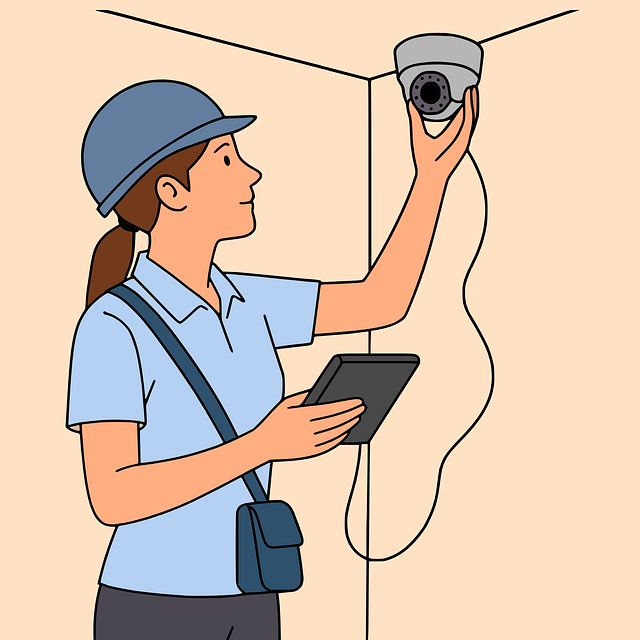Perimeter security solutions are vital for organizations, with legal frameworks dictating their implementation to protect personnel and assets. These regulations vary by region, requiring businesses to balance operational needs with compliance in locks, alarms, and surveillance. Regular updates, training, and audits ensure ongoing adherence. A comprehensive risk assessment guides solution development, incorporating physical and digital barriers. Data protection is crucial, using firewalls, IDS, and VPNs to safeguard sensitive information from unauthorized access and breaches, integrating these measures into perimeter security strategies for enhanced data privacy compliance.
In today’s digital era, robust perimeter security is paramount for organizations to safeguard their assets. This article explores the legal and compliance considerations underpinning effective implementation of perimeter security solutions. From understanding relevant legal frameworks to identifying compliance standards, assessing risks, and ensuring data protection, each component intertwines to create a comprehensive security strategy. Discover how these elements collectively contribute to fortifying an organization’s defenses against evolving cyber threats.
Understanding Perimeter Security Solutions: Legal Frameworks
Perimeter security solutions are a critical component in safeguarding assets and people within an organization. Understanding the legal frameworks that govern these solutions is essential to ensure compliance and mitigate risks. Different jurisdictions have varying regulations, with some focusing on physical barriers like fences and gates, while others emphasize access control systems and surveillance technologies.
In many countries, laws require businesses to implement reasonable security measures to protect against unauthorized access. This often includes detailed guidelines on how to design and maintain perimeter defenses, such as requiring specific types of locks, alarms, and monitoring systems. Staying informed about these legal requirements is crucial for selecting effective perimeter security solutions that not only meet operational needs but also adhere to the prescribed regulatory standards.
Compliance Standards for Effective Implementation
Implementing effective perimeter security requires adhering to stringent compliance standards, which serve as guidelines for ensuring safety and legality. These standards vary across industries and regions but share common goals: protecting sensitive areas, preventing unauthorized access, and safeguarding personnel and assets. For businesses adopting perimeter security solutions, understanding and meeting these regulations are crucial steps in their implementation process.
Compliance isn’t merely a checkbox exercise; it’s an ongoing commitment to maintaining robust security measures. It involves keeping abreast of evolving legal frameworks, industry best practices, and technological advancements in the field of perimeter security. Regular audits, staff training, and continuous system updates are integral parts of this process, ensuring that your chosen perimeter security solutions remain effective and compliant with current standards.
Risk Assessment and Mitigation Strategies
A comprehensive risk assessment is a cornerstone for developing effective perimeter security solutions. It involves meticulously analyzing potential threats, vulnerabilities, and their likelihood and impact. This process helps identify areas that require enhanced protection, such as high-value assets, critical infrastructure, or sensitive data centers. By understanding these risks, organizations can implement tailored mitigation strategies.
Mitigation strategies should focus on a multi-layered approach to perimeter security. This includes physical barriers like robust fences, access controls, and surveillance systems to deter unauthorized entry. Additionally, implementing digital solutions such as intrusion detection systems, biometric access control, and network segmentation enhances security further. Regular reviews and updates of these measures are vital to adapt to evolving threats, ensuring a robust and adaptive perimeter security system.
Data Protection: A Cornerstone of Perimeter Security
Data protection is a fundamental aspect and cornerstone of robust perimeter security solutions. With the increasing digitalisation and reliance on sensitive data, organisations must implement stringent measures to safeguard their information assets from unauthorised access or breaches. Perimeter security, as the first line of defence, plays a pivotal role in protecting data by controlling and monitoring entry points into an organisation’s network.
Effective perimeter security solutions involve employing advanced technologies like firewalls, intrusion detection systems (IDS), and virtual private networks (VPNs) to create a robust barrier around critical data repositories. These tools enable organisations to filter traffic, detect suspicious activities, and enforce strict access controls, thereby minimising the risk of data leaks or cyberattacks. By integrating data protection measures into their perimeter security strategies, businesses can ensure compliance with data privacy regulations while maintaining the integrity and confidentiality of their sensitive information.
Implementing robust perimeter security solutions requires a deep understanding of legal frameworks and compliance standards. By conducting thorough risk assessments and prioritizing data protection, organizations can create secure environments that safeguard their assets and sensitive information. Staying informed about evolving regulations and adopting best practices in perimeter security is essential to maintain a comprehensive and effective security posture.
